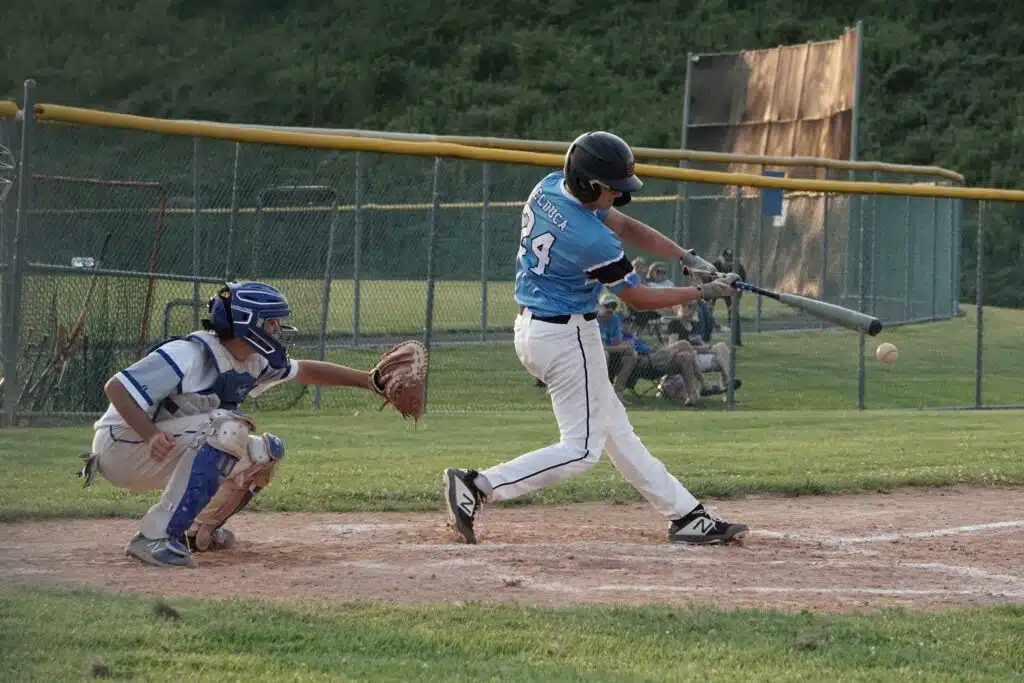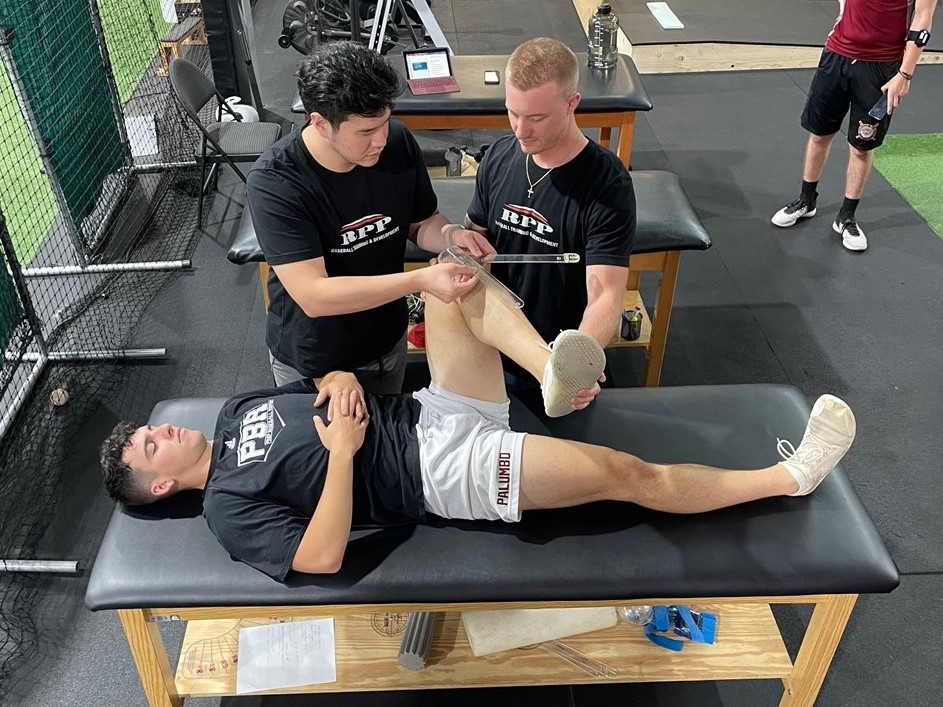
Having solid swing mechanics is essential for hitting consistently and effectively in baseball and softball. A smooth, well-executed swing not only maximizes bat speed but also generates power and allows you to make more accurate contact with the ball. Unfortunately, many hitters fall into common swing mistakes that can hinder their performance at the plate. In this post, we’ll explore some of the most common mistakes hitters make and offer tips for fixing them, so you can fine-tune your swing and become a more successful hitter.
1. Lunging Forward: Keep Your Balance

One of the most common mistakes in a baseball or softball swing is lunging forward. This happens when a hitter leans too far forward during their swing, throwing off their balance and disrupting their timing. The result? A weak, uncontrolled swing.
How to Fix It:
To correct this, focus on maintaining a strong, balanced stance. Keep your weight centered and initiate the swing with a smooth transfer of weight from your back foot to your front foot. This helps maintain your control and allows you to generate power from a stable base. Think of it like a coil – you want to load up before you unload!
2. Casting or “Sweeping” the Bat: Stay Compact

Casting or sweeping the bat occurs when a hitter extends their arms too early in the swing, which makes for a long, weak swing path. This not only reduces power but also makes it harder to make solid contact.
How to Fix It:
The key is to keep your hands back and close to your body as you load. This allows for a more compact, efficient swing path. Focus on driving the bat through the hitting zone and practicing with drills like hitting off a tee or using a batting cage to improve your contact.
3. Overstriding: Keep Your Stride Balanced

Overstriding is when a hitter takes too large of a stride during their swing, which can lead to a loss of balance and power. If your stride is too long, it makes it difficult to maintain a solid foundation for the swing, and you’ll lose your ability to generate power from your lower body.
How to Fix It:
Instead of reaching too far with your stride, focus on taking a balanced, controlled step. Your stride should be just long enough to allow proper weight transfer but not so long that you lose balance. Keep your front knee slightly flexed and avoid overextending your stride. This allows you to generate power from your lower body without sacrificing balance.
4. Poor Hip Rotation: Engage Your Lower Body

Many hitters fail to engage their hips fully during their swing, leading to an upper body-dominated motion that lacks power. Proper hip rotation is crucial for generating the torque and power needed to drive the ball.
How to Fix It:
Focus on initiating the swing with your lower body. As you transfer your weight, engage your hips and rotate them toward the pitcher. This will help you generate more power and make your swing feel more connected. By using your lower body effectively, you’ll maximize your power and ability to drive the ball.
5. Early or Late Hand Movement: Timing is Everything

Timing is crucial for making solid contact with the ball. If your hands start moving too early or too late, it can throw off your entire swing, making it harder to connect with the ball.
How to Fix It:
The hands should begin their forward movement as your weight transfers and your front foot starts to plant. This ensures that your hands are in the optimal position when the ball reaches the hitting zone. Practicing your timing will help you get your hands in sync with the rest of your body, ensuring that your swing is well-timed and efficient.
6. Lack of Bat Lag: Create a Whip-like Effect

Bat lag is the slight delay between your hands moving forward and the bat following, creating a whip-like effect that generates bat speed. Without enough bat lag, your swing will lack power and speed.
How to Fix It:
To develop bat lag, focus on maintaining a strong, firm front side while initiating your swing. Your hands should lead the swing, allowing the bat to “lag” behind before it accelerates through the hitting zone. This whip-like effect is key for generating maximum bat speed and power.
7. Inadequate Follow-through: Finish Strong
/cdn.vox-cdn.com/uploads/chorus_image/image/74022400/usa_today_25891267.0.jpg)
A strong follow-through is essential for transferring all of your energy through the ball and maintaining balance. Some hitters fail to complete their swing by not fully extending their arms or cutting their swing short.
How to Fix It:
Focus on finishing your swing with full arm extension and a fluid follow-through. This ensures that you’re maximizing your power potential and keeping your balance throughout the swing. A complete follow-through also helps keep you ready for the next pitch, maintaining good posture and positioning.
Fine-Tuning Your Swing Mechanics for Success

Mastering proper swing mechanics is key to becoming a more effective and consistent hitter. By avoiding common mistakes like lunging, casting, overstriding, poor hip rotation, early or late hand movement, lack of bat lag, and inadequate follow-through, you’ll be on your way to improving your swing. With a little practice and focus on these corrections, you can turn weaknesses into strengths and elevate your hitting game. Remember, consistent practice, proper technique, and feedback from coaches or experienced players will help you continue to refine your mechanics and get better every time you step up to the plate.
FAQs: Common Swing Mechanics Questions
Q: Why is my timing off when hitting?
A: Timing issues often occur when your hands move too early or too late. Focus on syncing your hand movement with your weight transfer and front foot planting. This will help you make solid contact at the optimal moment.
Q: How can I generate more power in my swing?
A: Generating power comes from engaging your lower body, especially your hips. Focus on proper hip rotation and transferring energy from your legs through your torso and hands. Bat lag and a strong follow-through also contribute to power.
Q: What’s the best way to correct overstriding?
A: To avoid overstriding, focus on taking a balanced, controlled stride. It should be just long enough to allow for proper weight transfer without losing balance. Keep your front knee slightly flexed to maintain stability.
Q: How can I improve my swing mechanics?
A: Start by practicing with drills that focus on specific areas of your swing, such as hand positioning, bat path, and weight transfer. Use a tee, soft-toss drills, or batting cages to reinforce good habits. Additionally, working with a coach or experienced player can provide valuable feedback to refine your swing.
Q: Why is my bat lag not developing?
A: To develop bat lag, focus on maintaining a firm front side while letting your hands lead the swing. This will allow the bat to lag behind before accelerating through the hitting zone, generating maximum bat speed and power.
Conclusion
Improving your swing mechanics is essential to becoming a more consistent and powerful hitter. By addressing common mistakes such as lunging, casting, and poor timing, and focusing on proper techniques like hip rotation and follow-through, you can refine your swing and boost your performance. With consistent practice and a focus on the details, you’ll find yourself hitting more accurately and powerfully, making you a more effective hitter on the field. Keep practicing, stay focused, and watch your hitting improve!
